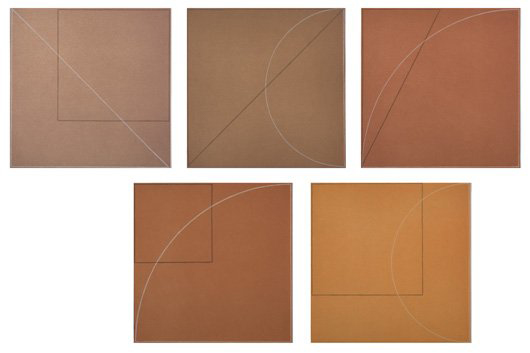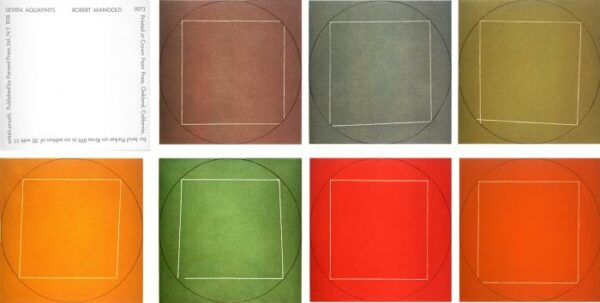Since 1970 Robert Mangold has been working with graphite lines and acrylic paint on rectangular panels assembled to create shaped paintings. Arthur Danto, writing in 2003 in Art on Paper, described a Mangold painting as “a single entity, suffused with lightness and grace, made of color, shape and drawing.” “Robert Mangold’s paintings,” wrote Michael Kimmelman in the New York Times in 1997, “are more complicated to describe than they seem, which is partly what’s good about them: the way they invite intense scrutiny, which, in the nature of good art, is its own reward.”
Mangold was born in 1937 in North Tonawanda, New York. He grew up in Buffalo and studied illustration at the Cleveland Institute of Art. In 1957, visiting the Carnegie International exhibition in Pittsburgh, he experienced the work of Jackson Pollock, Willem de Kooning, and other abstract expressionists, and switched his major to fine art. In 1959 he received a Yale University Summer Art Fellowship and continued on at Yale to earn a BFA in 1961 and an MFA in 1963.
Mangold’s fellow students at Yale were an extraordinary group that included Chuck Close, Richard Serra, Nancy Graves, and Sylvia Plimack. On graduation, he married Sylvia Plimack, who continued painting under the name Sylvia Plimack Mangold. The couple moved to New York, where Robert Mangold worked as an assistant in the library at the Museum of Modern Art. There he met Sol LeWitt, who worked as a receptionist, and Robert Ryman and Dan Flavin, who worked as guards.
In 1965 the Jewish Museum in New York held the first major exhibition of what was called minimal art and included Robert Mangold. In 1967 he won a National Endowment for the Arts grant and in 1969
a Guggenheim Fellowship. In 1971 he had his first solo museum exhibition at the Guggenheim Museum. He has been featured in the Whitney Biennial four times, in 1979, 1983, 1985, and 2004.
Mangold’s paintings, quiet and restrained on the surface, are much admired by artists. In a 1994 review in Art in America, Robert Kushner wrote that “underneath the composure of their execution, there is an almost romantic vividness of experience. The contrast of this veiled undercurrent and the Apollonian restraint of the presentation make these new paintings both powerful and poignant.”
Mangold made his first prints in 1972 at Crown Point Press and has made prints throughout his career, working with Pace Editions and Brooke Alexander Editions in addition to Crown Point. His work is in many museum collections, including the Museum of Modern Art and the Whitney Museum of American Art in New York, the San Francisco Museum of Modern Art, and the Tate Collection in London. He is represented by PaceWildenstein in New York and lives in Washingtonville, New York.
-Kim Bennett, Crown Point Press


